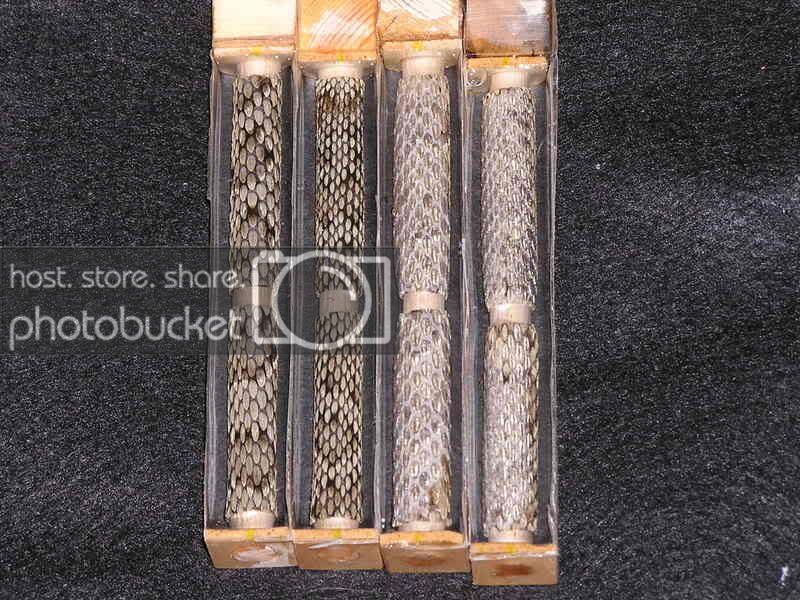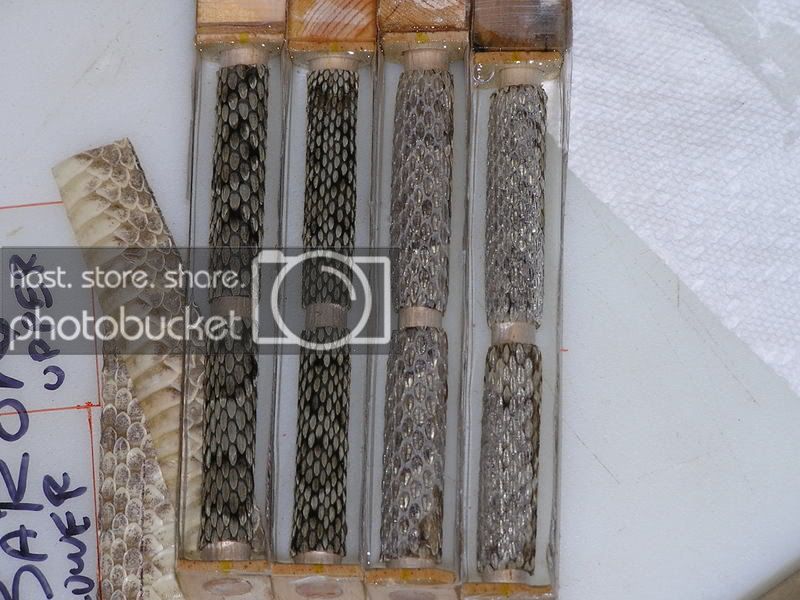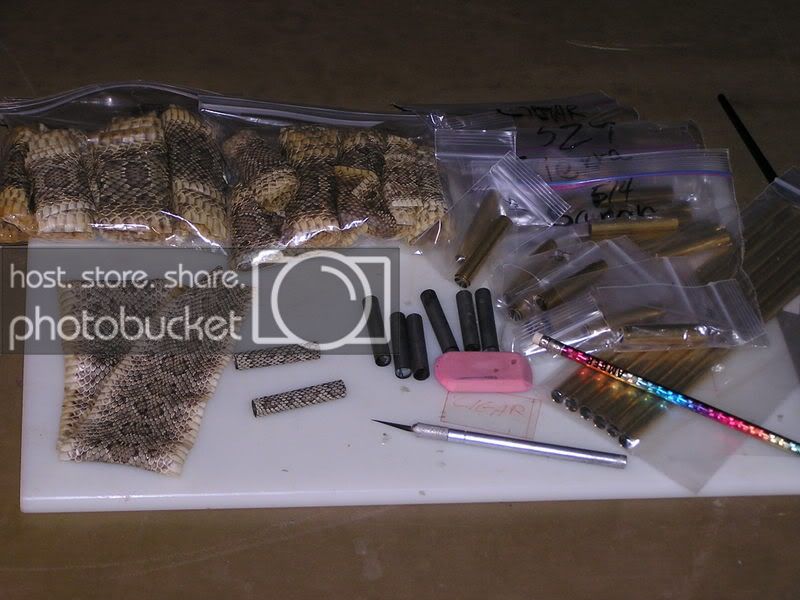bruce119
Member
Need Help FAST What Want Wrong
Here is a picture of some blanks I did last night. Notice the 2 on the left look good the 2 on the right has a shimmer like some air just on the surface.
What I did. First off I am using Alumlite Crystal Clear resin. I have been using this resin with excellent results. See my Birch Bark blanks. Any way I just got a large batch of snake skins freshly tanned from a suppler that deals with a lot of pen makers. Most the scales were removed I removed all the rest no scales. I cleaned them with regular 91% alcohol. Then CA them to a blacked tube. They set in a pressure pot all night 15 hrs at 50psi. When they came out this morning they looked great. Really good just now I looked at them and the two you see on the right developed that shimmer air look to them.
So what went wrong. All I can think was maybe not cleaning them good enough and I got a reaction. The skins are fresh and still have a wet greasy feel to them. Maybe I should have used denatured alcohol or something else. I just wiped them down maybe I need to soak them and really clean them better.
I'm sure some else out there like Don or Curtis knows just what I'm talking about. I don't really want to many failures and haven't had a problem like this before. I have 500" of skins I got to get this fixed.



Please help
Thanks
Bruce
Here is a picture of some blanks I did last night. Notice the 2 on the left look good the 2 on the right has a shimmer like some air just on the surface.
What I did. First off I am using Alumlite Crystal Clear resin. I have been using this resin with excellent results. See my Birch Bark blanks. Any way I just got a large batch of snake skins freshly tanned from a suppler that deals with a lot of pen makers. Most the scales were removed I removed all the rest no scales. I cleaned them with regular 91% alcohol. Then CA them to a blacked tube. They set in a pressure pot all night 15 hrs at 50psi. When they came out this morning they looked great. Really good just now I looked at them and the two you see on the right developed that shimmer air look to them.
So what went wrong. All I can think was maybe not cleaning them good enough and I got a reaction. The skins are fresh and still have a wet greasy feel to them. Maybe I should have used denatured alcohol or something else. I just wiped them down maybe I need to soak them and really clean them better.
I'm sure some else out there like Don or Curtis knows just what I'm talking about. I don't really want to many failures and haven't had a problem like this before. I have 500" of skins I got to get this fixed.



Please help
Thanks
Bruce
